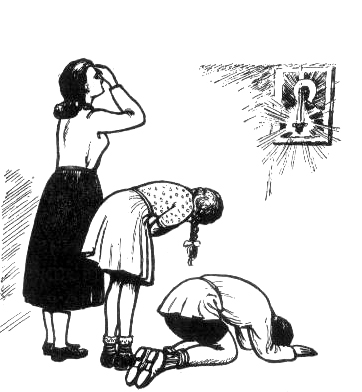by Brent Kostyniuk
Both Lungs is about East and West. It is about diversity and unity in the universal Catholic Church. However, it is also about the diversity which exists in the East. That diversity leads to richness. Such diversity exists in one of the most basic aspects of Christian life – prayer. This time, Both Lungs looks at the varying gestures Eastern Christians use when praying – bodily worship.
Eastern worship is a very sensual thing. Incense is burned and with it our sense of smell reminds us our prayers are meant to rise to heaven. Icons cover the interior of our churches, so our eyes might have a glimpse of heaven. So too, we pray with our bodies, taking different postures depending on the season and intent of our prayer.
Blessed Pope John Paul II expressed this beautifully in the Apostolic Letter Orientale Lumen, written in 1995. “Within this framework, liturgical prayer in the East shows a great aptitude for involving the human person in his or her totality: the mystery is sung in the loftiness of its content, but also in the warmth of the sentiments it awakens in the heart of redeemed humanity. In the sacred act, even bodiliness is summoned to praise, and beauty, which in the East is one of the best loved names expressing the divine harmony and the model of humanity transfigured, appears everywhere: in the shape of the church, in the sounds, in the colors, in the lights, in the scents.”
“Christianity does not reject matter. Rather, bodiliness is considered in all its value in the liturgical act, whereby the human body is disclosed in its inner nature as a temple of the Spirit and is united with the Lord Jesus, who himself took a body for the world’s salvation.”
Before continuing, there is a cautionary note. “Be wary of anything that says never,” a wise priest once told me when we were discussing prescriptions for bodily worship. It reminded me of a meteorology class at university. Students were required to present a forecast once a week. Part of the fun was counting how many times the words such as “chance, possibility, maybe, or likely” were used. So it is with bodily worship.
The most basic form of bodily worship, and one over which there can be no dispute, is the sign of the cross. As discussed last time, it is made with the thumb and first two fingers held together, a constant reminder of the Trinity. The remaining two fingers are tucked against the palm, a remembrance of Jesus’ two natures and, some would say, the descent of the Word into our world. After touching the forehead, the right shoulder is touched first, another reminder of Christ, Who sits at the Right Hand of God.
The sign of the cross, sometimes called a reverence, is done in three, increasingly reverent forms. The most basic is the gesture itself, often accompanied by bowing the head. Others, however, will reach down to touch the ground with their right hand as part of this reverence. Even in this, there is diversity. One priest told me he reaches to the ground first, then raises his hand up to make the sign of the cross, as his personal remembrance that he is lifting up Jesus’ Holy Cross and taking it upon himself. Others say the ground should be touched afterwards, as an act of humility. Sometimes referred to as a small reverence, the sign of the cross may be accompanied by a bow from the waist, in a single motion.
In making a prostration, or full reverence, the faithful make the sign of the cross, drop on their knees and lower their forehead to touch the ground. This action is used frequently during Great Lent and on feasts of great solemnity such as the Exaltation of the Holy Cross.
The sign of the cross can be not only a liturgical gesture, but a prayer and show of praise as well. Thus, Eastern Christians may use it in times of great joy, distress, or simply as a show of adoration. The start of a journey, the moment one receives a particular blessing such as success in a difficult undertaking, or when receiving news of an unfortunate occurance are all occasions when the sign of the cross is made. Even today, many will make a sign of the cross whenever they pass a church.
The position of our bodies as we pray has much significance. One posture is standing upright with arms reaching upwards. Origen (died c. 254) considered it to be essential in shaping our prayers. “Before a man stretches out his hands to heaven he must lift up his soul heavenward. Before he raises up his eyes he must lift up his sprit to God. For there can be no doubt that among the thousand possible positions of the body, outstretched hands and uplifted eyes are to be preferred above all others, so imagining forth in the body those directions of the soul which are fitting in the prayer.”
Then there is the question of kneeling. Although some Eastern Christians kneel at several points during the Divine Liturgy on Sunday, many consider this unacceptable. This theology of kneeling is based on ancient tradition, as expressed by Ireneus (died c. 202) “We kneel six days of the week in token of our frequent falls into sin; but on Sunday we remain standing as if to show that Christ has raised us again, and that by His grace He has delivered us from sin and death.” Regarding the Pascal season from Easter to Pentecost, Origen states, “Standing was the general observance of the whole Church on the Lord’s day, and the fifty days between Easter and Pentecost, in memory of our Saviour’s resurrection.”
So now you know all about Eastern bodily worship…maybe.
This piece first appeared in The Prairie Messenger. Reprinted with permission.

